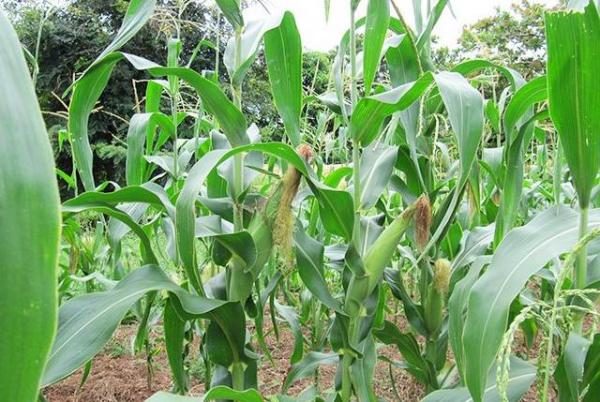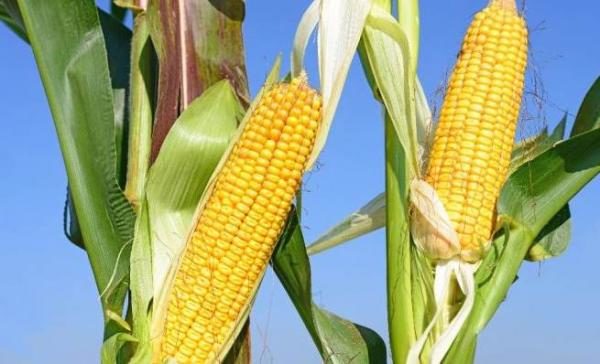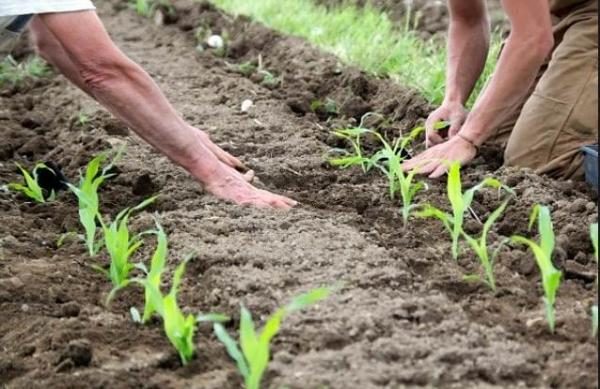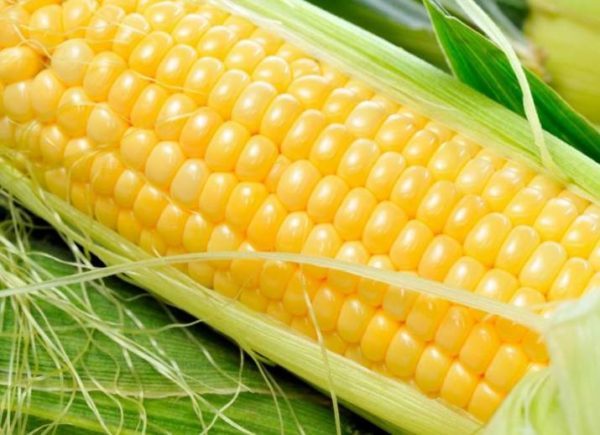Everyone knows about corn, and there is no person who would not love it in one form or another. Fresh, boiled, frozen, canned grains, corn porridge, and other varieties of healthy and tasty cereal.
Sugar corn variety has found its admirers all over the world. Many gardeners enjoy growing it on their own.
Table of contents
Description and characteristics
This is a one-year grass, rather patiently related to the complex climate, different soils, and undemanding to care, high - from one and a half to three meters plant. Differs in the presence of male and female flowers on one stem. Corn root reaches a length of more than one meter, has a very strong structure, fibrous.
Vitamins of group B, PP, C, carotene, as well as tryptophan and lysine, contribute to the rapid absorption of trace elements and the breakdown of carbohydrates.

Ripe cobs usually reach 16-25 cm, have a dense structure, bright yellow seeds, tight to each other. The taste is delicate and sweet, milky.
How is sweet corn different from ordinary
It is impossible to distinguish the seeds of ordinary fodder corn from sugar, if you do not have such experience. But, the seeds still have external differences:
- Fodder maize seeds are darker;
- Sugar varieties are somewhat smaller;
- When cooked, sugar varieties swell faster and become tender;
- Even dry seeds, if you get to eat them, are sweet at sweet corn.

Corn on the cob can be distinguished by the following characteristics:
- The cob is more rounded, barrel-shaped, with a blunt ending;
- Grains are lighter, milky,
- If you crush the grain between your fingers, it almost breaks;
- Even those that are not thermally processed are sweeter in taste, and feedstuffs are difficult to crack;
- When cooking is ready in 10 minutes, and feed in half an hour will be very tough.
Sweet corn is healthier and tastier than regular feed varieties. It is perfectly balanced complex of minerals and light sugars. Low levels of starch allows it to feast on even with a diet.
Fodder varieties are tasteless, require long-term heat treatment, have very hard grains.
Top Grades
There are more than 500 sugar varieties, and everyone is sure to find the best for themselves.
Important: Early varieties are suitable for more severe climates, as they have time to ripen before cold weather, and later for southern latitudes - they are the most productive.
Dobrynya

Early ripe variety, famous for its taste.Gentle grains, milky sweetness. Very fast and friendly germination of seeds, low-maintenance care. It is possible to plant seedlings or seeds as soon as a stable temperature is established above 10 degrees.
The plant is up to 170 cm high. 70 days after sowing, the grain is filled with maturity and ready to eat.
Spirit
One of the most favorite varieties of gardeners. Up to 2 meters high, with 20 cm cobs, very sweet and juicy grains. It is ideal both for the use in boiled kind, and for preservation.
Seeds are sown in April, and in May, already planted in the ground. Reaches full ripeness in 2 months.
Ice Nectar
Late-ripening super-sugar variety. The height reaches 2.5 m. Heat-loving, demanding watering and soil. Afraid of sudden changes in temperature. Maturity comes on 80 - 90 day. Suitable for all uses.
Gourmand 121
One of the earliest, high-sugar sugar varieties. After 70 days gives a friendly harvest of grains of milky ripeness. Rich taste and resistance to diseases.
Thermophilous during the seedling period, but on condition of hardening sprouts quickly adapts.
Landing rules

By observing simple conditions, gardeners and farmers get a rich harvest. It is important to consider several principles:
- Prepare the soil in the fall before frosts - carefully dig, remove weeds.
- When planting seeds in open ground, you should not do this before mid-May. Shoots should not appear at temperatures below 10 degrees.
- When planting seedlings, in April it is necessary to prepare the seeds: put them for one day on the sunny side on the windowsill or in the greenhouse, then hold for about an hour in cool water and rinse.
- Seeds to sit in separate pots of 2 pcs. Strongly moisten the ground, cover with a transparent film before germination.
Growth and care technology
Cultivation technology is almost the same as conventional varieties. When the first shoots:
- it is necessary to loosen the soil after each watering;
- prevent the soil from drying out;
- weed weeds;
- monitor the appearance of painful plants and promptly remove them.
Important: in the process of cob formation, you need to carefully consider the watering, since the size of the cob and the sweetness of the grains depends on the quality of irrigation.
Top dressing:
- After the appearance of the first five sheets, it is necessary to feed potash fertilizers;
- If the leaves have a light shade, slightly yellow, add nitrogen fertilizers when watering;
- If the edges of the leaves look singed, the plant has a clear lack of potassium.
Diseases and pests
The most common diseases are:
Fusarium

Fungal disease. Appears most often in the period of excessive humidity and affects already ripe ears. Grains acquire a light patina and begin to rot. It is important to check the crop and remove diseased plants.. After harvest burned.
Stem rot
During the growth period, dark spots are found on the lower part of the stem. It affects the ear, slowing the growth of the plant. It will only help the burning of diseased plants. In the autumn, it is necessary to burn all the leaves and stems, change the place of planting next year, or pickle with fungicides.
Corn rust
Bright red spots on the green leaves from the bottom. A fungal disease in which spores form on the leaves. For prophylaxis, seedlings are treated with faringicide
Sugar corn varieties - a great cereal. Its benefit is undeniable, and if you decide to grow it yourself on your land, choose varieties based on the location of the site, your priorities and wishes. And on your table all year round there will be these sweet golden grains in any form.
